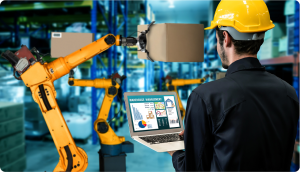
The last year has had schools and colleges move to remote learning. They had to quickly adapt to technology in ways that till then were reserved for online students taking short-term courses. The gaps in the existing student information systems became glaringly obvious as many educational institutions could not quickly integrate virtual learning or manage students remotely.
If your SIS platform was a car, are you driving a Premier Padmini or the latest model? Both will get you from point A to point B but the latest model has airbags, power steering, and higher mileage which the vintage car doesn’t. It also has more modern technology that makes driving a piece of cake. There will come a time when you will need a new ride and for most, it might be now. In that case, would it be more economical to add on features to your old car or instead buy a brand new model? If you want to be future-ready, like automating a previously manual process, then it might be time to look at new solutions that use new technology.
Is it time to replace your current SIS?
Digital transformation in education is here to stay and the pandemic has made more educational institutions understand the worth of interconnected systems. The benefits of digital transformation for higher educational institutions will vary depending on the institution’s size and structure. However, a modern ERP will support online admissions, curriculum management, student financials and provide real-time analysis. The last is what sets the advanced SIS solutions apart from legacy technology.
Here are 5 ways to evaluate your current student information system.
1. Does your SIS increase productivity?
When new students arrive at the campus at college (or even virtually), are they frustrated at how complicated it is to perform basic tasks? For instance, do they need to update their contact details in different systems, such as in the library management system, then again in the hostel management system, and in the fees management system? If your systems are not talking to each other, it will create a strong negative impact on students.
Aging systems also make it extremely difficult for faculty to work on course management, timetable management and more. If your current SIS is not automating processes then it is creating a labor-intensive environment that will prove costly in terms of taking away time from students, faculty and administrative staff that could be better spent on more productive work.
Also read: How Education ERP Eases the 6 Step Process Towards NBA Accreditation
2. Does it have business intelligence tools to support decision-making?
Educators require real-time, actionable data in a single, easily accessible location. You can gain insight into trends in student learning and performance if you have data that is easily available and presented in a usable, clear, and organized manner.
Data-Driven Decision Making (DDDM) requires a student information system to free data from legacy systems, in which data exists in different silos. The result of data silos is that there is no single unified view. Without a unified view of the data for business intelligence systems (BI), cross-functional analytics to inform decision-making will not be possible.
ITech India’s Edumate is a modern SIS that is continually upgrading its technology to include BI tools that make decision-making easier. Hear it from our customers…
Edumate, the Education Management ERP from iTech has made result analysis so much more stress-free. Previously it took us 2 weeks, with multiple resources working, to compile it. Now our reports for NAAC, Anna University, and internal analysis are ready in just a matter of minutes. – Head of Department, Sairam Group of Institutions
The Red Alert: Does your SIS have an interactive dashboard that brings disparate data and information together and streamlines workflow? Does your SIS support efficient and automated data exchange in real-time? If not, this is the right time to look for more advanced SIS alternatives.
Also read: NAAC: All You Need to Know About the Accreditation Process
3. Does it enable students and parent engagement?
A student information system that provides parents with a real-time, comprehensive perspective of their child’s performance can boost engagement, which in turn stimulates student progress and enhances educational results. Also, with the SIS, continuous communication between instructors, students and parents keep everyone on the same page, promoting student accountability and achievement.
Do parents have real-time visibility of their ward’s academic performance? If not, then it’s the right time to upgrade or replace your current SIS.
Also read: Everything You Wanted to Ask About School Management Software Pricing
4. Does your SIS easily integrate with third-party ed-tech products?
Your SIS should be integrated with all of your other digital tools, both those you have today and those you plan to buy in the future. For example, if classes are held on a Zoom call then will the attendance on Zoom be directly integrated into the attendance system? This requires your current SIS to have an open ecosystem i.e it should be able to connect with other systems through open APIs and vice versa.
SIS vendors who provide education technology solutions as part of their product suite, offerbi-directional SIS data transfer with 3rd party software partners. This will help you grow your capabilities and prepare for the future.
The Red Alert: The top interoperability factors to check in your SIS include an extended set of API technologies that can be used for integration. If your traditional SIS doesn’t support any of it, it’s better to make the switch.
Finally
Before taking the big leap to revamp your student information system, it’s a smart decision to evaluate the fitness of your current SIS. Most higher educational institutions have been using the same SIS for many years without any upgrades, limiting their ability to develop and advance.
One of the most important aspects of the SIS fitness framework is cost because if you’re considering changing or updating your current SIS software, you’ll need to compare and assess the costs associated just upgrading. An outdated SIS software will cost you more in order to meet the current technological requirements, whereas an advanced SIS solution will save your institution’s cost outlays by providing process automation technology and easy access at a click.
To know more about modern SIS features, talk to our team of experts today.










